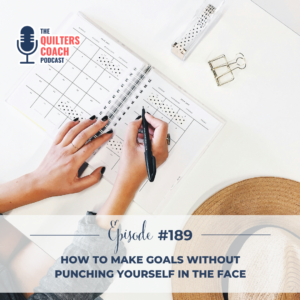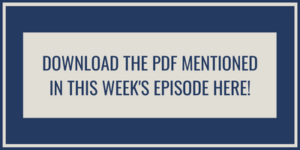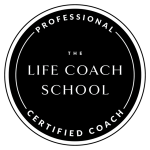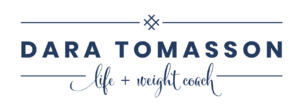
Do you feel like you’ve given up on making goals? Maybe you’re afraid to set them because checking in on them feels even worse than not making them at all. If you’ve ever felt stuck in a cycle of setting goals, losing motivation, and then beating yourself up over it—this episode is for you! Dara dives into the real reason we struggle with goal-setting and follow-
🎙️ Episode 189 Do you feel like you’ve given up on making goals? Maybe you’re afraid to set them because checking in on them feels even worse than not making them at all. If you’ve ever felt stuck in a cycle of setting goals, losing motivation, and then beating yourself up over it—this episode is for you! Dara dives into the real reason we struggle with goal-setting and follow-through, why self-sabotage happens, and how to break the cycle. Plus, she’s sharing a powerful mindset tool that has helped countless women inside her membership finally take control of their goals without fear, shame, or overwhelm.
In This Episode:
✔️ Why we avoid setting goals (and how to shift that mindset)
✔️ The “Board Meeting” strategy to manage your inner dialogue and fears
✔️ How to set realistic goals that actually stick
✔️ A simple 4-day challenge to help you rebuild trust in yourself
If you are ready to lose weight and change the way you think about hunger, sign up for the lifetime access of The Pieceful Heart Membership! Doors are open and you can find all the information by clicking here.
Key Takeaways:
💡 Your brain needs direction, just like a GPS. When you set a goal, you’re telling your brain where to go. But roadblocks will always pop up—it’s how you respond to them that makes the difference. Learn how to work with your brain instead of against it!
Decide on one small goal for the next four days. Maybe it’s doodling for five minutes, cutting fabric for a quilt, or drinking more water. Track it, check in, and notice which “board members” (self-doubt, fear, motivation, commitment) try to take over. Awareness is the first step to real change!
Bonus: Want to go deeper? Sign up for Dara’s FREE class to learn how to rewire your brain and change your inner dialogue for good. Join the Facebook group to get a code and join the Masterclass for free.
Please continue to rate this podcast, and follow me on Instagram for more tips and support.
- Watch this episode on YouTube.
- If you are ready to lose weight and change the way you think, sign up for the lifetime access for The Pieceful Heart Membership! Doors are open and you can find all the information by clicking here.
- Leave me a review in Apple
Full Episode Transcript:
189. How to make goals without punching yourself in the face
Do you feel like you don’t make goals anymore? And the fact that you are quitting on yourself? Are you afraid to make goals and then heaven forbid, check on them or even think about making goals? Because the idea of not making goals feels worse than making the goals, and you go into this big spin around like a dog chasing its tail. You’ve come to the right place. My name is Dara Tomasson and I am the quilters coach, and this is episode 189.
goals and how to stop punching yourself in the face. And so this is the quilters coach podcast and I’m a life coach that helps quilters and anyone else that wants to listen. You don’t have to just be a quilter to really learn how to live the kind of life that you really want to live. And I help women every day look at Why are they not waking up in the morning feeling full of trust that whatever they plan to do that day, they’re going to get it done.
And that when they go to bed every night, they’re like, way to go, girl. I’m really proud of you. All right. So today’s episode is talking about how do we make goals and to really start following through on them. So this episode is coming out the beginning of March. So we’ve had a few months of 2025 and by now.
The motivation has worn off and we’ve fallen back into old habits. And we’re just giving up or we’re just not being as aware, because we’re spending a lot of time distracting ourself. And, in fact, this episode and topic is coming from a lot of the work that I do with these women.
But one of the things that I wanted to share as a win in this, before I go into the meat of this podcast, which you are going to really want to listen to because I’m going to share an activity that has made a huge difference in my life and in the life of so many of the ladies in my membership who have tried this tool.
I have a group coaching program. In that membership, you can have a payment plan. You can pay all at once. That part’s not really that important, but it’s a group membership. So for some women. Shame has been like the middle name for weight loss.
They think that’s crazy to have to be in a group. However, there’s a lot of benefits. The other part of this and one of my struggles when I was offered a group program was there are some very personal and challenging. issues to work through when you are talking about weight loss. And I have helped a lot of women and continue to help women who have either been sexually abused or physically abused or verbally abused.
And so to get attention and when we lose weight, we get more attention that feels actually threatening and scary. So we have this feature in my membership called ask. a coach. This is where you can anonymously ask any question. I wanted to share this with you because it’s exciting that women can get this kind of help at this price point.
And this kind of accountability, it’s amazing. This member, who I don’t even know because of privacy, was triggered on one of our calls about an incident that happened when she was a teenager and her dad was physically abusing her mom.
And she, I think she was 16 or 17 stepped in and said, Hey, enough is enough of that. her father then pushed her down the stairs. So there was this big trigger that happened in the coaching call.
Now, sometimes, I have coached women on things that have been very sensitive. It just depends on the person where they’re at and what’s going on for them. This person submitted this situation. I was able to coach this person and then they were able to respond. And then I was able to go back and forth several times.
in the Ask a Coach, which is anonymous. That person was able to get the help they needed. They know if they need more help, they can either work with me one on one or with one of my coaches. or maybe they need to go to a trauma therapist and I can help them with that.
as I think about life coaching and getting support especially in a group setting. I really wanted to share that win because that happens inside the membership. I had one woman once where her husband was having an affair and she put it in the ask a coach that can be very embarrassing even though it’s about him, but we often take that on, don’t we?
Okay. Let’s talk about goal making and then I’m going to share a huge win. The reason we make goals is because we need a direction to go in. And I’m gonna, this is just really simple, like we’re gonna keep this like so simple.
So let’s say we want to go somewhere, like we don’t know how to direct ourselves. What do I do today? What’s going to go on? So I just need to say, I’m going to do this one thing. So it’s like you get in the car and you’re like, what do I need to do today? I need groceries.
So now you say to the car or your GPS closest grocery store or you know where to go to your favorite grocery store. you give the direction. and now you know where you’re heading. So if there is a road closure, or really icy roads you’re like, ugh.
I’m not sure if I’m going to get to the grocery store today because of these problems. We have these obstacles. And so then we can troubleshoot. We can say, you know what? I don’t really need to go to the grocery store today. We could have some canned beans and we could go to the freezer and get some stuff.
We can make it work. Maybe I’ll order groceries and see if they can deliver it. Or maybe a neighbor might have the one thing I need. You can now troubleshoot. How am I going to resolve that problem? A goal is just a direction for your brain, and then you can learn how to work through it.
there’s this concept of us having this inner dimming switch. when you think about making goals, so we’re giving our goal, we’re going into a direction like, oh, I want to be this kind of person I want to quilt. I want to use all the fabric that I own, or I want to give away a lot of fabric.
I have a client recently. She was feeling a lot of pressure and she gave away 30 Projects and 19 unfinished projects. A lot of what she bought was because of pressure when she was with other friends, she didn’t actually really love it, but wanted to be a part of it.
She ended up finding a friend who works in a community in Arizona kids that don’t have a lot of resources. And she was able to ship them all there, and it feels amazing. Now, she loves being in her sewing area. She goes in there every single day because she doesn’t have that weight hanging over her of, oh, you spent all this money on all these things, and now you’re not going to get them done.
She doesn’t have to feel like she has to finish them, because they’re going to their new home. And she released them. We make goals because we need a direction and then We have to evaluate. This is the part that’s really hard for people. It’s one thing to say, yeah, I want to finish quilting all my UFOs, or I want to use up all my fabric before I buy more fabric.
But there has to be accountability, when we evaluate, it’s a form of accountability saying okay, this is what I want. I want to do this thing. How am I doing on this thing? Being able to evaluate this is where the tool is going to come in.
That’s going to be such a game changer. We are not just one person. We have lots of us. Right now in my church it’s a volunteer kind of church where we do lots of volunteering and we’re given different assignments. I have two assignments now.
One is the singing teacher in primary and I have two different classes. I have kids that are three to six, The junior primary, and then I have the older kids who are 7 to 12. I am a different Dara when I’m teaching the juniors to when I’m teaching the seniors. I realize it in my mannerisms, in the way I talk, in the way I use my hands, how I use my body and the different activities.
I am very different. And now I have a new assignment where I’m going to be teaching young adults from 18 to 35 and so I am going to be a different version of me as I’m teaching that class. Before this I was the Gospel Doctrine teacher, so I taught 18 to however old and so I was a different version of me just like we have different roles and different versions. We actually have a lot of different versions of us inside and depending on what emotion is driving We will change the way we show up.
Pixar did a really great job, they did the movie inside out in 2015 and they just did the second one they had the different Emotions And this little girl, depending on what emotion she was leaning into, it totally changed the way that she acted.
So we have energy, we have anger, we have fear, and it was a really great way for people to get some vocabulary around that. This brings me into the board meeting tool. When we are the CEO of our life, what we think matters the most and not what our husband, not what our kids, not what our community, what we think matters most because we’re, our job is to be the best version of us.
So we need to come to these board meetings. I have this nice red journal. It looks very official. This is like my life book right here, my red book. And so I’ve come to my board meeting and I say, okay, this is this week and these are my goals. How am I doing with my goals? Now on the board, there is fear.
anxiety, depression, frustration, delight, curiosity, self doubt, motivation, comparison, commitment, all these different versions of us and these different emotions. They show up for the board meeting. So when you say, hey guys, we really want to Lose 30 pounds.
So you have fear saying but then your mom and your aunties They’re not gonna that because they like that they’re That size, and then they’re going to feel bad that they haven’t lost weight. So this is very scary. I don’t think we should do that. So that’s what fear is allowed to say right?
You’re like, okay, noted. Thank you, fear. And then anxiety comes up and it’s anxiety’s turn. And the anxiety says, worst case scenario, if you make a goal, but then you don’t achieve it, then you’re going to beat yourself up, and then you’re going to go into depression, and then you’re going to eat more ice cream, and then we’re going to have all that late night binging, and that’s all going to come back.
And so anxiety goes to the worst case scenario and stays there. And then we’re just going to gain another 70 pounds. So let’s just not do any of that and just stay the same. And we just gain a couple of pounds every year. And No problem. Okay, then we have delight when it hurts her turn and she says oh that would be so fun. That would be delightful to be 30 pounds less.
Oh, that would be really nice on our knees and hips. great idea I’m all in let’s go and then there’s curiosity who says hey, this sounds very Interesting. We want to lose 30 pounds. That sounds like a really good challenge. I’m excited to hear all the new ideas we can come up with And then we have motivation. Motivation is that short fuse like, yeah, let’s go let’s listen to some podcasts and let’s get some new water bottles and timers And then there’s the comparison. the comparison can be like, compare yourself to your past self. Comparison can be oh, but remember when you wanted to lose weight before and then we lost it all, but then you gained more?
Or a comparison is yeah, but Joan down the street? She also wanted to lose weight, and she did it, and now her life is so much better, Joan, we can’t, we’re not like Joan, right? Or a commitment girl and your CEO, she says, you know what? I think that’s a great thing to commit to.
We’re going to have lots of obstacles. We’re going to have lots of challenges, but I am all in. I’m like, let’s go. I got strategies for you. I, we’re going to get some accountability partners. We’re going to get some coaching and so maybe we need to do some therapy But let’s go.
I’m super committed to that goal and I’m going to see you through. Now I want you to imagine who normally shows up and has the most, they’re all there, but who do you listen to the most when you have your CEO meetings? Do you allow fear to run the show? Do you allow all the negative?
Or do you allow equal airtime? Do you make sure that you can listen to everyone’s concerns? Who do you let run the show? in this strategy, I want you to think about the end in mind so that when we also think about goal making it’s like I want to be that version of that person I want to be a person that is down 30 pounds and food isn’t an issue for them anymore
And so what we can do is say, okay, fear, anxiety, frustration, self doubt, you are all part of this journey. It’s totally fine, but you only get five seconds. commitment. And curiosity, you get five minutes. I’m going to listen to you more.
You’re going to sit closer to me. Yesterday I was watching my son play basketball and he got a foul. Instead of going on the bench and sitting by himself and beating himself up, he actually went and sat beside his coach. He has three coaches and he sat beside one coach and was like, Help me out here.
Help me understand. What can I do differently? I Love that. My son knows that he has This coach, who’s going to help him. I want you to set yourself up for success. in this board meeting, because this is always happening, right? We always have this inner dialogue, but if you can now structure it and you recognize you’re like, Hey there, fear, I know you, it’s okay.
You can talk. I’m going to put my timer on. You’re allowed to talk for 30 seconds after that we’re done, right? That’s called healthy boundaries. This is what I want you to do. Decide on one goal now if a big goal like losing 30 pounds or 100 pounds or whatever. That’s way too much. Let’s do something like I’m going to doodle.
I’m gonna doodle five minutes every day for four days Okay, so you just write that down a sticky note or whatever and say I’m gonna doodle for five minutes for four days so then that’s your goal I’m going to put that in my phone and put a reminder on my phone At noon and say have you done your doodling and then I might have another reminder at 6 and say have you done your doodling?
And then at 9 you’re like, oh, it’s almost bedtime. Have you done your doodling and you’re gonna do that for four days Because that’s the goal. The goal is I’m going to have 40 minutes of doodling in 4 days and I’m just going to play with it. And I’m going to have 4 prompts like lines, circles, bubbles, I don’t know, rectangles, whatever.
you’re going to notice, oh boy, I got some unruly board members in this brain of mine. I would love you to report to me because I am a coach to help you improve your life. I’m a life coach. I help you learn how to feel happier and healthier.
Now, if you’re listening to this in March of 2025, inside my membership, we are focusing on how to overcome overwhelm. life is always happening, We learn how to use that expression. When the storms come, learn to direct your sales.
I even had that on my wall. Yes. And big vinyl. And so it’s like the storms are happening. The wind is blowing, but how am I going to use that for my good? so we’re going to do that in March. In April of 2025, we’re learning how to become more resilient and how to resolve conflict and some tools that will really help you to resolve that.
So every month inside the membership, we have a special focus as we build the foundation of permanent weight loss, mental and emotional, physical too. It’s been so fun spending this time with you, and if you want to take advantage of my offer of free coaching, It’s just 25 minutes.
I had a consultation this morning with a woman for free coaching. She was able to see three things that she’s doing subconsciously, that she knows is one of the reasons why she’s not having success. She was able to feel like she’s going to put some strategies in place. One of them was to join the membership because she knew that having accountability and having other women there, Is what she really needs to create those healthy habits that will help her build her long arm quilting business and stop the self sabotage.
That’s one of her biggest problems. It was awesome to meet with her. I only have a few every week and I’d love you to take advantage of them. If you have any other questions about membership, you can Message me and I can help you with that. All right. Take care




